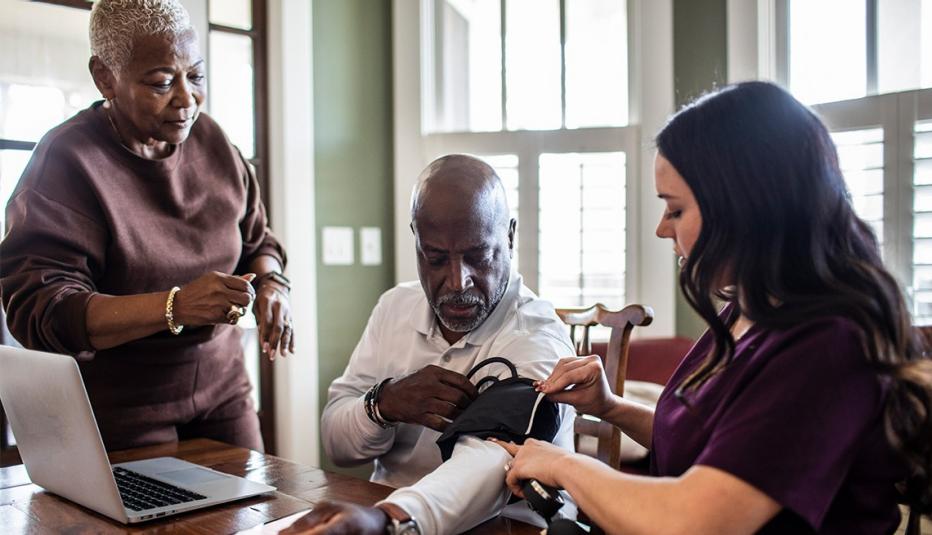AARP Hearing Center
Surprise billing occurs when a consumer receives an unexpected medical bill for out-of-network care. It can happen in emergencies, when the consumer does not have a true opportunity to select providers, or in nonemergency situations where the consumer believes they are making a reasonable effort to select less expensive in-network care.
Unfortunately, it has happened too often. In 2016, one in seven privately insured consumers got a surprise medical bill despite obtaining care at an in-network facility. A 2020 survey showed that one in five insured adults received a surprise medical bill within just the past two years, and that 18 percent of emergency room visits resulted in a surprise bill. These bills are typically for hundreds or thousands of dollars, but examples in the hundreds of thousands also abound.
Federal and State Laws Can Protect Consumers from Unexpected Health Care Costs
A new federal law, the No Surprises Act, protects a wide group of consumers with private health insurance coverage and holds them harmless from surprise bills. As of January 1, 2022, that law’s effective date, 33 states have enacted a surprise-billing laws. Although many of the state laws are comprehensive, others offer partial protection from surprise bills and the policy details of all the laws vary.
Officials could find the implementation of the No Surprises Act and state surprise-billing laws complicated. But execution of the first steps in the federal implementing rules, careful planning by states, and sustained oversight of the provisions of the state and federal laws can help ensure that surprise bills are a loophole of the past.
The Federal No Surprises Act
The law protects the majority of consumers with private health insurance. Unlike state surprise-billing laws, this federal law includes protection for individuals enrolled in self-insured employer-based health insurance plans regulated by the federal government and the Federal Employee Health Benefits Program. As of 2019, an estimated 47 million adults ages 50 to 64 enrolled in such private coverage and therefore could benefit from the law’s protections.
The No Surprises Act contains several key provisions to protect consumers who find themselves in situations that could result in surprise bills, as well as those who end up receiving surprise bills through no fault of their own. It also requires insurers and providers to share information about these protections with consumers. It provides:
- Consumer Protections in Surprise-Billing Situations. It covers situations in which consumers receive emergency care services, services to stabilize a consumer after an emergency, and nonemergency services.
- Consumer Protections When Surprise Billing Occurs. It removes consumers from rate payment disputes between health care providers and insurers, where consumers are often caught in the middle.
- Exceptions for Notice and Consent. It gives consumers opportunities to consent to receive out-of-network care, but with strong guardrails to prevent surprise billing.
- More Information Shared with Consumers, by Providers and Insurers. Prior to services, a consumer must be notified of the network status of the facility and all providers involved in the care and given and good-faith cost estimates.
- Good-Faith Estimate for Uninsured Individuals. When an uninsured individual schedules an appointment in advance, providers and facilities must provide a good-faith estimate for all related costs as well as information on a dispute resolution process.
What’s Next: Necessary Steps to Realize Full Protections from Surprise Billing for Older Adults
In 2021, federal officials sketched a blueprint for implementing the No Surprises Act in a series of rules. The first rule set forth the conditions for the ban on surprise billing in emergency and nonemergency situations, codified key consumer protections, and outlined provider requirements concerning balanced billing. A second rule identified plans to operationalize the dispute resolution process between insurers and providers.
As the No Surprises Act is integrated with individual state laws, stakeholders should monitor certain areas to ensure that the law is implemented in the way most protective of consumers, including older adults. Key areas include:
- Quick and Seamless Coordination of State and Federal Laws. States should act quickly to provide stakeholders with clear guidance about how the No Surprises Act will interact with their own surprise-billing laws. Federal officials should help execute the anticipated collaboration (spelled out for states in letters from the Centers for Medicare & Medicaid Services and consider how to be responsive and offer timely support to states as they issue and enforce guidance on existing and future state surprise-billing laws.
- Effective Communication of New Protections to Consumers. Federal officials have begun communication efforts and created a dedicated website and help desk where consumers can find information, ask questions, and field complaints. Insurers and providers must collaborate to disseminate information through familiar methods and in plain language.
- Access to Meaningful Complaint and Appeals Processes. The No Surprises Act sets forth a consumer complaint process, and most state laws also provide an avenue for consumers to file grievances. States must ramp up enforcement of these processes.
- Removal of a Consumer’s Responsibility to Enforce Hold Harmless Protections. The burden of ensuring the success of the new law should not lie upon consumers. Implementation should ensure that prohibited surprise bills never reach the consumer.
- Maintain Meaningful Consumer Access to Care. State departments of insurance should continue to monitor and regulate network adequacy and ensure that negotiated payments for out-of-network providers do not limit access to specialty care or disincentivize providers from contracting with health plans.





































































